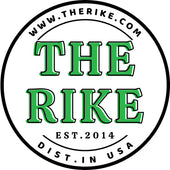Harnessing Nature's Remedies: A Journey into Herbal Medicine and Healing Plants
The world of herbal medicine has captivated humanity for centuries. As we stand at the intersection of modern medicine and ancient healing practices, the quest for natural remedies has gained immense popularity. This article delves into the essence of herbal medicine, exploring its history, benefits, popular herbs, and the science behind their therapeutic properties.
1. The Roots of Herbal Medicine
Herbal medicine, often referred to as phytotherapy, traces its origins back thousands of years to indigenous cultures. Ancient texts from civilizations such as the Egyptians, Chinese, and Greeks illustrate the use of medicinal plants.
- Ancient Egypt: Herbal remedies like garlic and myrrh were used for their healing properties.
- Traditional Chinese Medicine: Herbal formulas play a critical role in diagnosing and treating various health issues.
- Indian Ayurveda: Utilizes a wide range of herbs to balance bodily energies and promote wellness.
2. Understanding the Benefits of Herbal Medicine
Herbal medicine offers a plethora of benefits, often serving as a complementary approach to conventional treatments.
- Natural Healing: Many herbs possess compounds that help the body heal naturally.
- Holistic Approach: Focuses on treating the entire person rather than just symptoms.
- Fewer Side Effects: Herbal remedies typically have fewer side effects compared to synthetic medications.
3. Popular Healing Herbs and Their Uses
Below are some well-known herbs that have been recognized for their therapeutic properties:
3.1 Chamomile (Matricaria chamomilla)
Chamomile is renowned for its calming effects and is commonly used to aid sleep and digestion. The flower's essential oils have anti-inflammatory and antioxidant properties.
3.2 Echinacea (Echinacea purpurea)
This powerful herb is commonly used to boost the immune system and reduce the severity of colds and flu. Echinacea has been studied for its ability to stimulate immune functions.
3.3 Lavender (Lavandula angustifolia)
Widely appreciated for its soothing aroma, lavender is often used in aromatherapy to reduce anxiety and improve sleep quality.
3.4 Ginger (Zingiber officinale)
Ginger is celebrated for its effectiveness against nausea, particularly seasickness and pregnancy-related nausea. It also exhibits anti-inflammatory properties.
3.5 Turmeric (Curcuma longa)
Curcumin, the active compound in turmeric, is recognized for its anti-inflammatory and antioxidant benefits. It is often used to alleviate chronic pain and inflammation.
4. The Science Behind Herbal Remedies
Modern science is increasingly validating the efficacy of herbal medicine. Numerous studies have illuminated the compounds found in plants and their biological activities.
- Phytochemicals: These are the active constituents of herbs that contribute to their therapeutic effects. Examples include flavonoids, alkaloids, and terpenes.
- Clinical Studies: Recent clinical trials have demonstrated the effectiveness of certain herbs, increasing their acceptance in mainstream medicine.
- Safety and Regulation: Understanding the importance of sourcing herbal products from reputable suppliers ensures quality and safety.
5. Incorporating Herbal Remedies into Daily Life
Integrating herbal medicine into your daily routine can be a simple yet effective way to enhance overall health. Here are a few suggestions:
- Herbal Teas: Start your day with a cup of herbal tea, such as chamomile or peppermint.
- Herb-Infused Oils: Utilize oils infused with healing herbs for massages or skin care.
- Cooking with Herbs: Use fresh herbs like basil, rosemary, and cilantro in meals to benefit from their nutritional and medicinal properties.
6. Herbal Medicine Practices Worldwide
Herbal medicine is practiced worldwide, with each culture offering unique perspectives and methodologies.
6.1 Traditional Chinese Medicine (TCM)
TCM incorporates herbs into a comprehensive system of diagnosis and treatment, focusing on restoring balance within the body through various natural remedies, including acupuncture.
6.2 Ayurveda
This ancient Indian practice centers around achieving balance among the body, mind, and spirit through herbs, diet, and lifestyle modifications.
6.3 Western Herbalism
Focuses on the use of local plants and herbs, emphasizing traditional knowledge and practices that have evolved over generations.
7. Safety Considerations
While herbal medicine has many benefits, it is essential to approach it with caution:
- Consultation with Healthcare Professionals: Always consult with a healthcare provider before starting any herbal regimen, especially if you are on medications.
- Dosage and Potency: Understand the proper dosage and potency to avoid adverse effects.
- Allergic Reactions: Be aware of any allergies to specific plants.
8. The Future of Herbal Medicine
With growing interest in natural health solutions, the future of herbal medicine looks promising. Continued research, combined with traditional knowledge, will enhance therapeutic applications.
8.1 Innovations in Herbal Medicine
Emerging technologies and increased scientific exploration will lead to new discoveries in herbal applications, transforming herbal medicine's role in healthcare.
8.2 A Blend of Tradition and Modernity
The combination of traditional practices with modern scientific understanding offers a holistic approach to wellness, empowering individuals to make informed health choices.
Conclusion
Herbal medicine presents a profound opportunity to reconnect with nature and leverage the gifts it offers. As we navigate the complexities of health and wellness, harnessing the power of herbal remedies may provide not only relief but also a deeper understanding of our own bodies and the natural world.
Embark on this journey, explore various healing plants, and foster a harmonious relationship with these natural allies in your quest for health and well-being.





Leave a comment